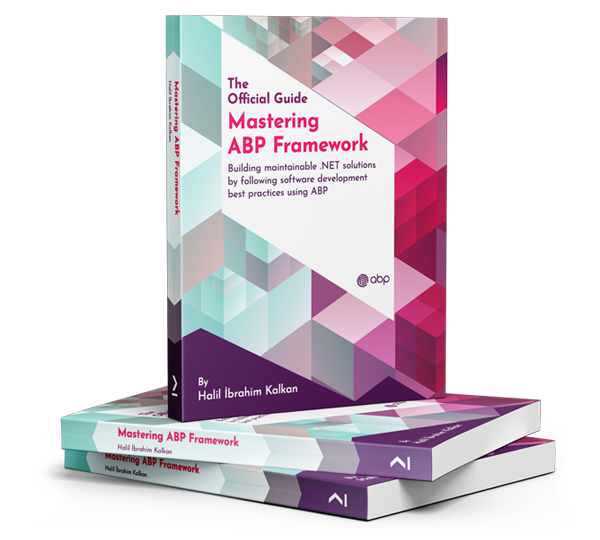It looks like the error is still occurring. I added that code to the IdentityService microservice, but I'm still getting the same error. It's rare, but it still happens.
hi alirizaadiyahsi
You can test this:
https://abp.io/support/questions/8068/Suspicious-updates-on-OpenIddictApplication-when-token-endpoint-is-called-with-clientcredentials-granttype#answer-3a158dd3-918a-fd76-1e37-5cfe204100e5
I am checking, I will inform you.
An unhandled exception has occurred while executing the request.
Volo.Abp.Data.AbpDbConcurrencyException: The database operation was expected to affect 1 row(s), but actually affected 0 row(s); data may have been modified or deleted since entities were loaded. See https://go.microsoft.com/fwlink/?LinkId=527962 for information on understanding and handling optimistic concurrency exceptions.
---> Microsoft.EntityFrameworkCore.DbUpdateConcurrencyException: The database operation was expected to affect 1 row(s), but actually affected 0 row(s); data may have been modified or deleted since entities were loaded. See https://go.microsoft.com/fwlink/?LinkId=527962 for information on understanding and handling optimistic concurrency exceptions.
at Microsoft.EntityFrameworkCore.Update.AffectedCountModificationCommandBatch.ThrowAggregateUpdateConcurrencyExceptionAsync(RelationalDataReader reader, Int32 commandIndex, Int32 expectedRowsAffected, Int32 rowsAffected, CancellationToken cancellationToken)
at Microsoft.EntityFrameworkCore.Update.AffectedCountModificationCommandBatch.ConsumeResultSetWithRowsAffectedOnlyAsync(Int32 commandIndex, RelationalDataReader reader, CancellationToken cancellationToken)
at Microsoft.EntityFrameworkCore.Update.AffectedCountModificationCommandBatch.ConsumeAsync(RelationalDataReader reader, CancellationToken cancellationToken)
at Microsoft.EntityFrameworkCore.Update.ReaderModificationCommandBatch.ExecuteAsync(IRelationalConnection connection, CancellationToken cancellationToken)
at Microsoft.EntityFrameworkCore.Update.ReaderModificationCommandBatch.ExecuteAsync(IRelationalConnection connection, CancellationToken cancellationToken)
at Microsoft.EntityFrameworkCore.SqlServer.Update.Internal.SqlServerModificationCommandBatch.ExecuteAsync(IRelationalConnection connection, CancellationToken cancellationToken)
at Microsoft.EntityFrameworkCore.Update.Internal.BatchExecutor.ExecuteAsync(IEnumerable`1 commandBatches, IRelationalConnection connection, CancellationToken cancellationToken)
at Microsoft.EntityFrameworkCore.Update.Internal.BatchExecutor.ExecuteAsync(IEnumerable`1 commandBatches, IRelationalConnection connection, CancellationToken cancellationToken)
at Microsoft.EntityFrameworkCore.Update.Internal.BatchExecutor.ExecuteAsync(IEnumerable`1 commandBatches, IRelationalConnection connection, CancellationToken cancellationToken)
at Microsoft.EntityFrameworkCore.Storage.RelationalDatabase.SaveChangesAsync(IList`1 entries, CancellationToken cancellationToken)
at Microsoft.EntityFrameworkCore.ChangeTracking.Internal.StateManager.SaveChangesAsync(IList`1 entriesToSave, CancellationToken cancellationToken)
at Microsoft.EntityFrameworkCore.ChangeTracking.Internal.StateManager.SaveChangesAsync(StateManager stateManager, Boolean acceptAllChangesOnSuccess, CancellationToken cancellationToken)
at Microsoft.EntityFrameworkCore.SqlServer.Storage.Internal.SqlServerExecutionStrategy.ExecuteAsync[TState,TResult](TState state, Func`4 operation, Func`4 verifySucceeded, CancellationToken cancellationToken)
at Microsoft.EntityFrameworkCore.DbContext.SaveChangesAsync(Boolean acceptAllChangesOnSuccess, CancellationToken cancellationToken)
at Volo.Abp.EntityFrameworkCore.AbpDbContext`1.SaveChangesAsync(Boolean acceptAllChangesOnSuccess, CancellationToken cancellationToken)
--- End of inner exception stack trace ---
at Volo.Abp.EntityFrameworkCore.AbpDbContext`1.SaveChangesAsync(Boolean acceptAllChangesOnSuccess, CancellationToken cancellationToken)
at Volo.Abp.Domain.Repositories.EntityFrameworkCore.EfCoreRepository`2.InsertAsync(TEntity entity, Boolean autoSave, CancellationToken cancellationToken)
at Castle.DynamicProxy.AsyncInterceptorBase.ProceedAsynchronous[TResult](IInvocation invocation, IInvocationProceedInfo proceedInfo)
at Volo.Abp.Castle.DynamicProxy.CastleAbpMethodInvocationAdapterWithReturnValue`1.ProceedAsync()
at Volo.Abp.Uow.UnitOfWorkInterceptor.InterceptAsync(IAbpMethodInvocation invocation)
at Volo.Abp.Castle.DynamicProxy.CastleAsyncAbpInterceptorAdapter`1.InterceptAsync[TResult](IInvocation invocation, IInvocationProceedInfo proceedInfo, Func`3 proceed)
at Volo.Abp.OpenIddict.Tokens.AbpOpenIddictTokenStore.CreateAsync(OpenIddictTokenModel token, CancellationToken cancellationToken)
at OpenIddict.Core.OpenIddictTokenManager`1.CreateAsync(TToken token, CancellationToken cancellationToken)
at OpenIddict.Core.OpenIddictTokenManager`1.CreateAsync(OpenIddictTokenDescriptor descriptor, CancellationToken cancellationToken)
at OpenIddict.Core.OpenIddictTokenManager`1.OpenIddict.Abstractions.IOpenIddictTokenManager.CreateAsync(OpenIddictTokenDescriptor descriptor, CancellationToken cancellationToken)
at OpenIddict.Server.OpenIddictServerHandlers.Protection.CreateTokenEntry.HandleAsync(GenerateTokenContext context)
at OpenIddict.Server.OpenIddictServerDispatcher.DispatchAsync[TContext](TContext context)
at OpenIddict.Server.OpenIddictServerDispatcher.DispatchAsync[TContext](TContext context)
at OpenIddict.Server.OpenIddictServerHandlers.GenerateAccessToken.HandleAsync(ProcessSignInContext context)
at OpenIddict.Server.OpenIddictServerDispatcher.DispatchAsync[TContext](TContext context)
at OpenIddict.Server.OpenIddictServerDispatcher.DispatchAsync[TContext](TContext context)
at OpenIddict.Server.AspNetCore.OpenIddictServerAspNetCoreHandler.SignInAsync(ClaimsPrincipal user, AuthenticationProperties properties)
at Microsoft.AspNetCore.Authentication.AuthenticationService.SignInAsync(HttpContext context, String scheme, ClaimsPrincipal principal, AuthenticationProperties properties)
at Microsoft.AspNetCore.Mvc.Infrastructure.ResourceInvoker.<InvokeResultAsync>g__Logged|22_0(ResourceInvoker invoker, IActionResult result)
at Microsoft.AspNetCore.Mvc.Infrastructure.ResourceInvoker.<InvokeNextResultFilterAsync>g__Awaited|30_0[TFilter,TFilterAsync](ResourceInvoker invoker, Task lastTask, State next, Scope scope, Object state, Boolean isCompleted)
at Microsoft.AspNetCore.Mvc.Infrastructure.ResourceInvoker.Rethrow(ResultExecutedContextSealed context)
at Microsoft.AspNetCore.Mvc.Infrastructure.ResourceInvoker.ResultNext[TFilter,TFilterAsync](State& next, Scope& scope, Object& state, Boolean& isCompleted)
at Microsoft.AspNetCore.Mvc.Infrastructure.ResourceInvoker.<InvokeResultFilters>g__Awaited|28_0(ResourceInvoker invoker, Task lastTask, State next, Scope scope, Object state, Boolean isCompleted)
at Microsoft.AspNetCore.Mvc.Infrastructure.ResourceInvoker.<InvokeNextResourceFilter>g__Awaited|25_0(ResourceInvoker invoker, Task lastTask, State next, Scope scope, Object state, Boolean isCompleted)
at Microsoft.AspNetCore.Mvc.Infrastructure.ResourceInvoker.Rethrow(ResourceExecutedContextSealed context)
at Microsoft.AspNetCore.Mvc.Infrastructure.ResourceInvoker.Next(State& next, Scope& scope, Object& state, Boolean& isCompleted)
at Microsoft.AspNetCore.Mvc.Infrastructure.ResourceInvoker.<InvokeFilterPipelineAsync>g__Awaited|20_0(ResourceInvoker invoker, Task lastTask, State next, Scope scope, Object state, Boolean isCompleted)
at Microsoft.AspNetCore.Mvc.Infrastructure.ResourceInvoker.<InvokeAsync>g__Logged|17_1(ResourceInvoker invoker)
at Microsoft.AspNetCore.Mvc.Infrastructure.ResourceInvoker.<InvokeAsync>g__Logged|17_1(ResourceInvoker invoker)
at Microsoft.AspNetCore.Routing.EndpointMiddleware.<Invoke>g__AwaitRequestTask|7_0(Endpoint endpoint, Task requestTask, ILogger logger)
at Volo.Abp.AspNetCore.Auditing.AbpAuditingMiddleware.InvokeAsync(HttpContext context, RequestDelegate next)
at Volo.Abp.AspNetCore.Auditing.AbpAuditingMiddleware.InvokeAsync(HttpContext context, RequestDelegate next)
at Microsoft.AspNetCore.Builder.UseMiddlewareExtensions.InterfaceMiddlewareBinder.<>c__DisplayClass2_0.<<CreateMiddleware>b__0>d.MoveNext()
--- End of stack trace from previous location ---
at Swashbuckle.AspNetCore.SwaggerUI.SwaggerUIMiddleware.Invoke(HttpContext httpContext)
at Swashbuckle.AspNetCore.Swagger.SwaggerMiddleware.Invoke(HttpContext httpContext, ISwaggerProvider swaggerProvider)
at Microsoft.Asp...
and
There is an entry which is not saved due to concurrency exception:
OpenIddictApplication {Id: b14afde6-b027-01f2-0d93-3a0a6949a1e9} Modified```
We have a dashboard page with multiple widgets, each making asynchronous calls to different services. Most of the time, when I refresh the page, we randomly receive HTTP 500 errors from different services. This causes data not to load into the widget.
I noticed several tickets related to this issue, but I haven’t been able to find a solution yet.
Do you have an idea about this?
@maliming, not it is clear. As you said problem is MyTypeActivatorCache . Now I removed it and I am creating controller every time. Here is the latest controller activator:
public class DaisyControllerActivator : IControllerActivator
{
private readonly ServiceBasedControllerActivator _serviceBasedControllerActivator;
public DaisyControllerActivator(ServiceBasedControllerActivator serviceBasedControllerActivator)
{
_serviceBasedControllerActivator = serviceBasedControllerActivator;
}
public object Create(ControllerContext context)
{
try
{
return _serviceBasedControllerActivator.Create(context);
}
catch (Exception ex)
{
// Create controller if not found.
return ActivatorUtilities.CreateInstance(context.HttpContext.RequestServices, context.ActionDescriptor.ControllerTypeInfo.AsType());
}
}
public void Release(ControllerContext context, object controller)
{
if (context == null)
{
throw new ArgumentNullException(nameof(context));
}
if (controller == null)
{
throw new ArgumentNullException(nameof(controller));
}
_serviceBasedControllerActivator.Release(context, controller);
}
}
Thanks a lot for your patient/help.
Actually I shared all the code I have in the question.
Okay it is working now. Could give more detailed explanation about this?
Also, what is the best practice, should I always use IRootServiceProvider instead of IServiceProvider?
Here is my original question: https://support.abp.io/QA/Questions/4883/Dynamically-add-controller
This is working with a simple controller. But if I inject transient dependency classes, it is only working for the first request after that I am getting following error:
System.ObjectDisposedException: 'Instances cannot be resolved and nested lifetimes cannot be created from this LifetimeScope as it has already been disposed.
Here is my controller (as string):
public class DbProviderController : ControllerBase
{
string connectionString = "some connection string";
private readonly DaisyDatabaseProviderFactory _daisyDatabaseProviderFactory;
public DbProviderController(DaisyDatabaseProviderFactory daisyDatabaseProviderFactory)
{
_daisyDatabaseProviderFactory = daisyDatabaseProviderFactory;
}
[HttpGet]
public async Task<IEnumerable<Dictionary<string, object>>> GetPatientData()
{
return await _daisyDatabaseProviderFactory.Create(Daisy.Core.DatabaseProviders.DatabaseProviderTypes.MsSql).GetAllAsync(connectionString, "select * from some_table", 200);
}
}
I am compiling this controller code string and adding as appPart like this:
public class DynamicApplicationPartManager : ITransientDependency
{
private readonly ApplicationPartManager _partManager;
private readonly IActionDescriptorCollectionProvider _actionDescriptorCollectionProvider;
public DynamicApplicationPartManager(ApplicationPartManager partManager, IActionDescriptorCollectionProvider actionDescriptorCollectionProvider)
{
_partManager = partManager;
_actionDescriptorCollectionProvider = actionDescriptorCollectionProvider;
}
public void Create(byte[] assembly)
{
var newAssembly = Assembly.Load(assembly);
if (_partManager.ApplicationParts.Any(ap => ap.Name == newAssembly.GetName().Name)) return;
_partManager.ApplicationParts.Add(new AssemblyPart(newAssembly));
DaisyActionDescriptorChangeProvider.Instance.HasChanged = true;
DaisyActionDescriptorChangeProvider.Instance.TokenSource.Cancel();
}
...
}
DaisyDatabaseProviderFactory :
public class DaisyDatabaseProviderFactory : ITransientDependency
{
private readonly IServiceProvider _serviceProvider;
public DaisyDatabaseProviderFactory(IServiceProvider serviceProvider)
{
_serviceProvider = serviceProvider;
}
public IDaisyDatabaseProvider Create(DatabaseProviderTypes databaseProvider)
{
return databaseProvider switch
{
DatabaseProviderTypes.MsSql => _serviceProvider.GetRequiredService<MsSqlDatabaseProvider>(),
DatabaseProviderTypes.MySql => _serviceProvider.GetRequiredService<MySqlDatabaseProvider>(),
DatabaseProviderTypes.PostgreSql => _serviceProvider.GetRequiredService<PostgreSqlDatabaseProvider>(),
DatabaseProviderTypes.MongoDb => _serviceProvider.GetRequiredService<MongoDatabaseProvider>(),
DatabaseProviderTypes.None => throw new NotImplementedException($"The database provider '{databaseProvider}' is not implemented!"),
DatabaseProviderTypes.Oracle => throw new NotImplementedException($"The database provider '{databaseProvider}' is not implemented!"),
DatabaseProviderTypes.SqLite => throw new NotImplementedException($"The database provider '{databaseProvider}' is not implemented!"),
_ => throw new NotImplementedException($"The database provider '{databaseProvider}' is not implemented!")
};
}
}
MsSqlDatabaseProvider
public class MsSqlDatabaseProvider : IDaisyDatabaseProvider
{
public async Task<IEnumerable<Dictionary<string, object>>> GetAllAsync(string connectionString, string query, int maxResultCount = int.MaxValue, int skipCount = 0)
{
await using var connection = new SqlConnection(connectionString);
query = $"SELECT * FROM ({query}) AS t order by 1 OFFSET {skipCount} ROWS FETCH NEXT {maxResultCount} ROWS ONLY";
var rows = await connection.QueryAsync(query, commandTimeout: 60 * 3);
return rows.ToDictionaryRowsList();
}
}
IDaisyDatabaseProvider
public interface IDaisyDatabaseProvider : ITransientDependency
{
Task<IEnumerable<Dictionary<string, object>>> GetAllAsync(string connectionString, string query, int maxResultCount = int.MaxValue, int skipCount = 0);
}
ApiManagerServiceHttpApiModule
[DependsOn(
typeof(ApiManagerServiceApplicationContractsModule),
typeof(AbpAspNetCoreMvcModule),
typeof(CoreHttpApiModule))]
public class ApiManagerServiceHttpApiModule : AbpModule
{
public override void PreConfigureServices(ServiceConfigurationContext context)
{
PreConfigure<IMvcBuilder>(mvcBuilder => { mvcBuilder.AddApplicationPartIfNotExists(typeof(ApiManagerServiceHttpApiModule).Assembly); });
}
public override void ConfigureServices(ServiceConfigurationContext context)
{
context.Services.AddSingleton<IActionDescriptorChangeProvider>(DaisyActionDescriptorChangeProvider.Instance);
context.Services.AddSingleton(DaisyActionDescriptorChangeProvider.Instance);
context.Services.AddTransient<ServiceBasedControllerActivator>();
context.Services.Replace(ServiceDescriptor.Transient<IControllerActivator, DaisyControllerActivator>());
Configure<AbpLocalizationOptions>(options =>
{
options.Resources
.Get<ApiManagerServiceResource>()
.AddBaseTypes(typeof(AbpUiResource));
});
Configure<AbpAuditingOptions>(options =>
{
options.IsEnabledForGetRequests = true;
options.HideErrors = false;
options.IsEnabledForIntegrationServices = true;
});
Configure<AbpExceptionHandlingOptions>(options =>
{
options.SendExceptionsDetailsToClients = true;
options.SendStackTraceToClients = false;
});
context.Services.ConfigureOpenTelemetry();
}
public override async Task OnPostApplicationInitializationAsync(ApplicationInitializationContext context)
{
await context.ServiceProvider
.GetRequiredService<ApiManagerControllerRegistrar>()
.RegisterAsync();
}
}
And after that I can see it in swagger. For the first request it is working, other than that it is throwing the error that I mentioned above:
[api-manager-service_d2c3d4bb-2]: [09:16:49 ERR] ---------- RemoteServiceErrorInfo ----------
[api-manager-service_d2c3d4bb-2]: {
[api-manager-service_d2c3d4bb-2]: "code": null,
[api-manager-service_d2c3d4bb-2]: "message": "Instances cannot be resolved and nested lifetimes cannot be created from this LifetimeScope as it (or one of its parent scopes) has already been disposed.",
[api-manager-service_d2c3d4bb-2]: "details": "ObjectDisposedException: Instances cannot be resolved and nested lifetimes cannot be created from this LifetimeScope as it (or one of its parent scopes) has already been disposed.\r\n",
[api-manager-service_d2c3d4bb-2]: "data": {},
[api-manager-service_d2c3d4bb-2]: "validationErrors": null
[api-manager-service_d2c3d4bb-2]: }
[api-manager-service_d2c3d4bb-2]:
[api-manager-service_d2c3d4bb-2]: [09:16:49 ERR] Instances cannot be resolved and nested lifetimes cannot be created from this LifetimeScope as it (or one of its parent scopes) has already been disposed.
[api-manager-service_d2c3d4bb-2]: System.ObjectDisposedException: Instances cannot be resolved and nested lifetimes cannot be created from this LifetimeScope as it (or one of its parent scopes) has already been disposed.
[api-manager-service_d2c3d4bb-2]: at Autofac.Core.Lifetime.LifetimeScope.ThrowDisposedException()
[api-manager-service_d2c3d4bb-2]: at Autofac.Core.Lifetime.LifetimeScope.ResolveComponent(ResolveRequest request)
[api-manager-service_d2c3d4bb-2]: at Autofac.ResolutionExtensions.TryResolveService(IComponentContext context, Service service, IEnumerable`1 parameters, Object& instance)
[api-manager-service_d2c3d4bb-2]: at Autofac.ResolutionExtensions.ResolveService(IComponentContext context, Service service, IEnumerable`1 parameters)
[api-manager-service_d2c3d4bb-2]: at Microsoft.Extensions.DependencyInjection.ServiceProviderServiceExtensions.GetRequiredService[T](IServiceProvider provider)
[api-manager-service_d2c3d4bb-2]: at Daisy.Core.DataManagement.DatabaseProviders.DaisyDatabaseProviderFactory.Create(DatabaseProviderTypes databaseProvider) in C:\Users\aliriza\Documents\Projects\GitHub\Daisy\shared\Daisy.Core\src\Daisy.Core.Domain\DataManagement\DatabaseProviders\DaisyDatabaseProviderFactory.cs:line 25
[api-manager-service_d2c3d4bb-2]: at DaisyDataBaseProvider.DbProviderController.GetPatientData()
[api-manager-service_d2c3d4bb-2]: at lambda_method2045(Closure, Object)
[api-manager-service_d2c3d4bb-2]: at Microsoft.AspNetCore.Mvc.Infrastructure.ActionMethodExecutor.AwaitableObjectResultExecutor.Execute(ActionContext actionContext, IActionResultTypeMapper mapper, ObjectMethodExecutor executor, Object controller, Object[] arguments)
[api-manager-service_d2c3d4bb-2]: at Microsoft.AspNetCore.Mvc.Infrastructure.ControllerActionInvoker.<InvokeActionMethodAsync>g__Logged|12_1(ControllerActionInvoker invoker)
[api-manager-service_d2c3d4bb-2]: at Microsoft.AspNetCore.Mvc.Infrastructure.ControllerActionInvoker.<InvokeNextActionFilterAsync>g__Awaited|10_0(ControllerActionInvoker invoker, Task lastTask, State next, Scope scope, Object state, Boolean isCompleted)
[api-manager-service_d2c3d4bb-2]: at Microsoft.AspNetCore.Mvc.Infrastructure.ControllerActionInvoker.Rethrow(ActionExecutedContextSealed context)
[api-manager-service_d2c3d4bb-2]: at Microsoft.AspNetCore.Mvc.Infrastructure.ControllerActionInvoker.Next(State& next, Scope& scope, Object& state, Boolean& isCompleted)
[api-manager-service_d2c3d4bb-2]: at Microsoft.AspNetCore.Mvc.Infrastructure.ControllerActionInvoker.InvokeInnerFilterAsync()
[api-manager-service_d2c3d4bb-2]: --- End of stack trace from previous location ---
[api-manager-service_d2c3d4bb-2]: at Microsoft.AspNetCore.Mvc.Infrastructure.ResourceInvoker.<InvokeNextExceptionFilterAsync>g__Awaited|26_0(ResourceInvoker invoker, Task lastTask, State next, Scope scope, Object state, Boolean isCompleted)
BTW, it is working if I write this controller hardcoded (traditional way).
Hi @liangshiwei, this is the good point. This fixes my issue.
Thanks a lot.
I have following code to add controller dynamically.
[HttpPost]
public async Task<AppPartDto> CreateAsync(CreateAppPartInput input)
{
var dto = await _appPartsAppService.CreateAsync(input);
if (!dto.IsRunning) return dto;
var assembly = Assembly.Load(dto.CompiledCode);
if (_partManager.ApplicationParts.Any(ap => ap.Name == assembly.GetName().Name)) return dto;
_partManager.ApplicationParts.Add(new AssemblyPart(assembly));
DaisyActionDescriptorChangeProvider.Instance.HasChanged = true;
DaisyActionDescriptorChangeProvider.Instance.TokenSource.Cancel();
return dto;
}
And I can see the controller is added in swagger:
But when I want to call it, I am getting following error.
[api-manager-service_87ede53f-7]: [19:18:00 ERR] ---------- RemoteServiceErrorInfo ----------
[api-manager-service_87ede53f-7]: {
[api-manager-service_87ede53f-7]: "code": null,
[api-manager-service_87ede53f-7]: "message": "An internal error occurred during your request!",
[api-manager-service_87ede53f-7]: "details": null,
[api-manager-service_87ede53f-7]: "data": {},
[api-manager-service_87ede53f-7]: "validationErrors": null
[api-manager-service_87ede53f-7]: }
[api-manager-service_87ede53f-7]:
[api-manager-service_87ede53f-7]: [19:18:00 ERR] The requested service 'Daisy.ApiManagerService.Customers.CustomersController' has not been registered. To avoid this exception, either register a component to provide the service, check for service registration using IsRegistered(), or use the ResolveOptional() method to resolve an optional dependency.
[api-manager-service_87ede53f-7]: Autofac.Core.Registration.ComponentNotRegisteredException: The requested service 'Daisy.ApiManagerService.Customers.CustomersController' has not been registered. To avoid this exception, either register a component to provide the service, check for service registration using IsRegistered(), or use the ResolveOptional() method to resolve an optional dependency.
[api-manager-service_87ede53f-7]: at Autofac.ResolutionExtensions.ResolveService(IComponentContext context, Service service, IEnumerable`1 parameters)
[api-manager-service_87ede53f-7]: at Microsoft.AspNetCore.Mvc.Controllers.ControllerFactoryProvider.<>c__DisplayClass6_0.<CreateControllerFactory>g__CreateController|0(ControllerContext controllerContext)
[api-manager-service_87ede53f-7]: at Microsoft.AspNetCore.Mvc.Infrastructure.ControllerActionInvoker.Next(State& next, Scope& scope, Object& state, Boolean& isCompleted)
[api-manager-service_87ede53f-7]: at Microsoft.AspNetCore.Mvc.Infrastructure.ControllerActionInvoker.InvokeInnerFilterAsync()
[api-manager-service_87ede53f-7]: --- End of stack trace from previous location ---
[api-manager-service_87ede53f-7]: at Microsoft.AspNetCore.Mvc.Infrastructure.ResourceInvoker.<InvokeNextExceptionFilterAsync>g__Awaited|26_0(ResourceInvoker invoker, Task lastTask, State next, Scope scope, Object state, Boolean isCompleted)
[api-manager-service_87ede53f-7]: [19:18:00 INF] Executing ObjectResult, writing value of type 'Volo.Abp.Http.RemoteServiceErrorResponse'.
[api-manager-service_87ede53f-7]: [19:18:00 INF] Executed action Daisy.ApiManagerService.Customers.CustomersController.Get (OnTheFlyCompilationAssembly) in 237.6787ms
[api-manager-service_87ede53f-7]: [19:18:00 INF] Executed endpoint 'Daisy.ApiManagerService.Customers.CustomersController.Get (OnTheFlyCompilationAssembly)'
[api-manager-service_87ede53f-7]: [19:18:00 DBG] Added 0 entity changes to the current audit log
[api-manager-service_87ede53f-7]: [19:18:00 INF] Request finished HTTP/2 GET https://localhost:44996/api/api-manager-service/customers - - - 500 - application/json;+charset=utf-8 240.8945ms
Maybe there is an elegant way to add controller dynamically?
I can do this in an dotnet api project (which is not related to ABP) and it is working. But with ABP I think I should register the assembly(controller) to dependency container dynamically.
Any suggestion would be appropriate. Thanks.

